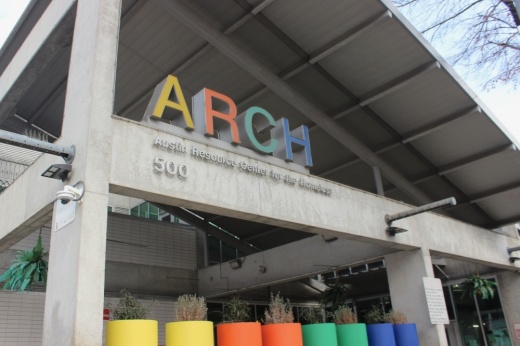“We’re not always going to get it right, we’re not always going to do it where everybody agrees, and we’re not always going to probably put money where everybody thinks all the money ought to go. But we’re looking at doing it in a different way so that we’ll be in a position to make better decisions going forward," Mayor Kirk Watson said. "This is all about, right now, the budget that’s upcoming.”
The big picture
Over the past several years, many of Austin's homelessness programs have been funded with one-time local spending and federal relief dollars from the American Rescue Plan Act. Officials are now looking to turn some of those one-time items into permanent investments, replace the federal ARPA funds that are running low, and expand some services to meet the community's growing need.
With the city facing budget gaps that are set to widen through the 2020s, Austin may not be able to keep all current programs in place or add new ones without a revenue boost of tens of millions of dollars. That increase could come through a tax rate election, or TRE, asking voters to authorize hiking taxes beyond a state-imposed cap.
"We’re just trying to maintain current efforts at that level, and ... my constituents want to increase the level of support and cleanups and housing and maintenance and all those kinds of things," council member Chito Vela said. "The only way we get there is likely going to be a tax rate election."
Officials have already been considering a TRE to fund city services from parks to public safety amid the projected budget deficits. City Council is set to review a new policy for such elections in May, and would decide whether to call one for 2025 during their July and August budget deliberations.
By the numbers
With those spending considerations in mind, council members held the first-ever joint meeting of their public health and finance committees April 28 to focus on homelessness response efforts that have remained a priority on the dais. The review came after officials had asked for a new spending blueprint informed by the latest reporting on regional homelessness.
“We are at a pivotal time right now in looking at, how do we address homelessness, how do we ensure that we have sustainable funding in our homelessness response system? And how we navigate that, it’s going to be critical that we lean on the expertise and recommendations from our staff," Mayor Pro Tem Vanessa Fuentes said.
In the April briefing, Homeless Strategy Officer David Gray recommended millions of dollars to replace expiring ARPA funds, build new shelter beds and housing for those exiting homelessness, and beef up various services and response efforts:
- Nearly $23 million to maintain current initiatives. That includes replacing $15.65 million in federal ARPA dollars for the temporary Marshalling Yard shelter, bridge shelters tied to the city's encampment clearing program, community-based shelters, street outreach and rapid rehousing through the Downtown Austin Community Court. It'd also solidify more than $7 million for one-time homelessness prevention, diversion and exit services, and fill a $3.5 million funding gap at the city's Eighth Street Shelter.
- About $33 million for expanded investments
Zooming in
The more than $30 million in enhanced services proposed by city staff ranges from early interventions to stop people from becoming homeless, to more intense care and support for housing those experiencing homelessness for years. It'd also go toward public-facing updates like a better system for managing public encampments and resident calls for service.
“We are now, for the first time I think, and certainly in the past couple of years, looking at the entire continuum. And we’re looking at it with real numbers, and with performance requests as part of that. And that makes what we’re preparing to do in the budget process better," Watson said.
Gray noted that encampment cleanups remains a priority in Austin's Homeless Strategy Office, and for nearly a dozen other city departments involved in those responses. He said Austin closed or cleaned up more than 1,500 individual encampment sites last year alone, which took up significant staff time and resources. The office is now planning to launch a public-facing dashboard to help residents follow the city's work and track complaints this year, and is seeking additional employees to help handle that work.
“Oftentimes, if the cleanup or the closure is not well-coordinated, people will mostly migrate to another plot of land nearby, private property or public property, and we’re just chasing folks. That’s why we made it a priority this year to adopt the city’s first coordinated encampment closure and cleanup policy," Gray said.
The city and local partners also hope to make real-time shelter bed information available to people living on the streets, expand street outreach, and bolster resources for housing and other support around town. Another option being considered is the creation of new "micro-shelters" to serve smaller groups of people in existing city facilities, although no firm strategy or potential locations are finalized yet.
Gray noted the city only has one full-scale location where people can connect with various services—the Sunrise Homeless Navigation Center in South Austin—and said a network of similar facilities elsewhere in town would expand access while also reducing impacts on the neighborhood around the Sunrise center.
Millions more could be spent on hundreds of new shelter beds, rapid rehousing units for shorter-term clients and permanent supportive housing units for longer-term stays that Austin currently needs. Those additions would follow the current stream of supportive housing spaces backed by the city, county and other organizations.The outlook
Officials noted that while the city is a central player in the regional Homelessness Response System, further support will be needed from other entities and local companies or philanthropists to address the growing need on the streets. Gray called Austin a relative outlier among large Texas cities given the share of its budget dedicated to homelessness, and in a lacking philanthropic giving around the issue.
It remains to be seen which spending recommendations will end up in Austin's next budget and which would be funded with new city revenue from a potential TRE. If an election is called, council member Ryan Alter said the city needs to outline a clear plan and progress markers to share with voters this fall.
“I just think we have to make sure that whatever our investments are, we can prove to the public that they’re going to get what they invest in," he said.





